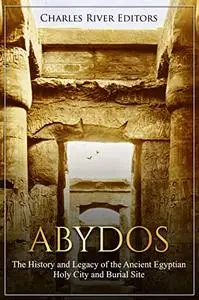
*Includes pictures
*Includes ancient accounts
*Includes online resources and a bibliography for further reading
*Includes a table of contents
Africa may have given rise to the first human beings, and Egypt probably gave rise to the first great civilizations, which continue to fascinate modern societies across the globe nearly 5,000 years later. From the Library and Lighthouse of Alexandria to the Great Pyramid at Giza, the Ancient Egyptians produced several wonders of the world, revolutionized architecture and construction, created some of the world’s first systems of mathematics and medicine, and established language and art that spread across the known world. With world-famous leaders like King Tut and Cleopatra, it’s no wonder that today’s world has so many Egyptologists.
In ancient Egypt, cities held political and religious significance, which meant that if the political or religious tides changed, so too could the fortunes of particular cities. Memphis is perhaps the best known of ancient Egypt’s cities because it was fortunate enough to be the political capital of the Egyptian state for most of its history. Hundreds of miles to Memphis’ south, Thebes became an important city during the Middle Kingdom and its stature grew during the New Kingdom when many of the pharaohs came from there and the national god, Amun, had its cult center in the city. Others cities, such as Tanis and Sais, were important for much shorter periods in Egyptian history. The city of Abju, which was known as Abydus to the Greeks, and later became known simply as “Abydos” had a history that was as long as Memphis’, and although its influence on pharaonic culture may not have been as apparent, it was no less profound.
The city of Abydos was the most important political city in ancient Egypt’s “Archaic” or Early Dynastic Period, which encompassed the first two dynasties of Egyptian history (ca. 3100-2650 BC). All of the kings of the First Dynasty and two of the kings of the Second Dynasty are believed to have resided in the nearby, but as of yet unlocated, city of Thinis and were buried in the necropolis of Abydos, making it one of the holiest sites in early pharaonic history. After the Archaic Period, Abydos lost much of its political influence to Memphis, Thebes, and other cities, but retained its significance by becoming an important religious center. Beginning in the Old Kingdom (ca. 2686-2181 BC), the first major temples were built near the city, attracting priests and pilgrims alike, but it was in the Middle Kingdom (ca. 2055-1650 BC) when Abydos became the center of the Osiris cult. As the importance and popularity of Osiris grew throughout Egypt, so too did the city. Several kings in the New Kingdom (ca. 1550-1069 BC) and Late Period built mortuary temples to their own cults and added to the existing monuments to Osiris in order to ensure their immortality and to prove their piousness to their people. Eventually, though, when the Greeks took control of Egypt, the importance of Abydos waned and so too did its size.
Abydos: The History and Legacy of the Ancient Egyptian Holy City and Burial Site examines the history of the city, and what life and death were like there. Along with pictures depicting important people, places, and events, you will learn about Abydos like never before.
DOWNLOAD LINK